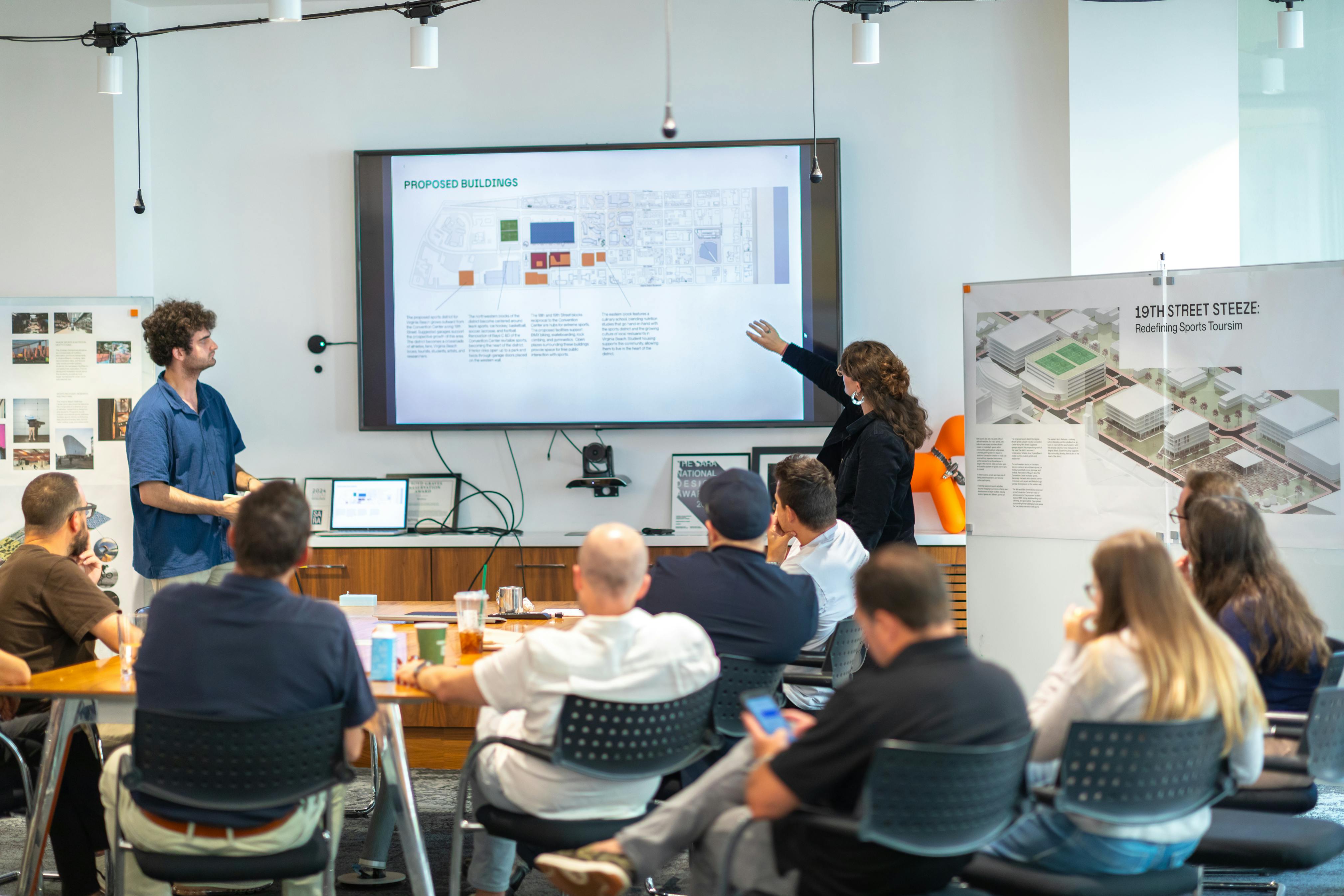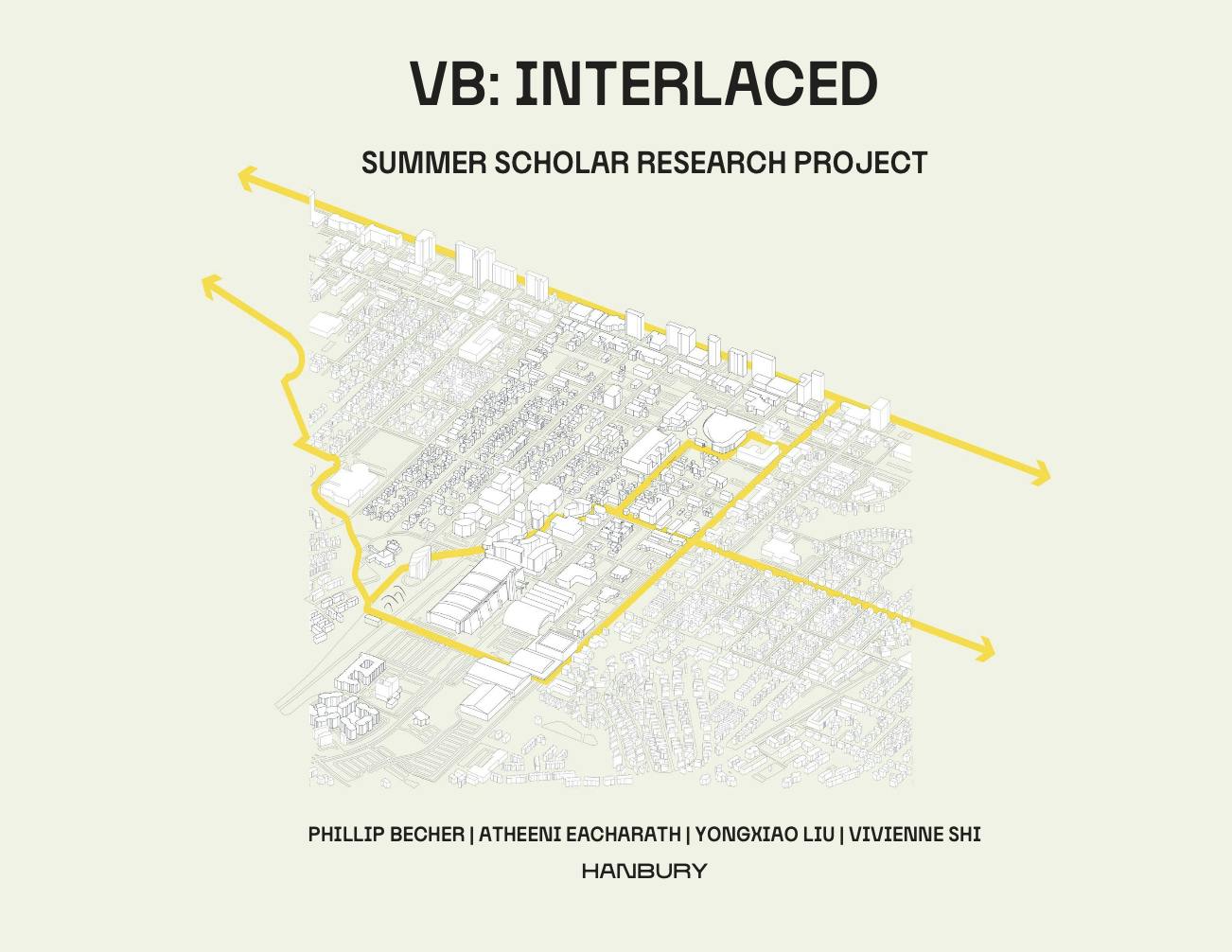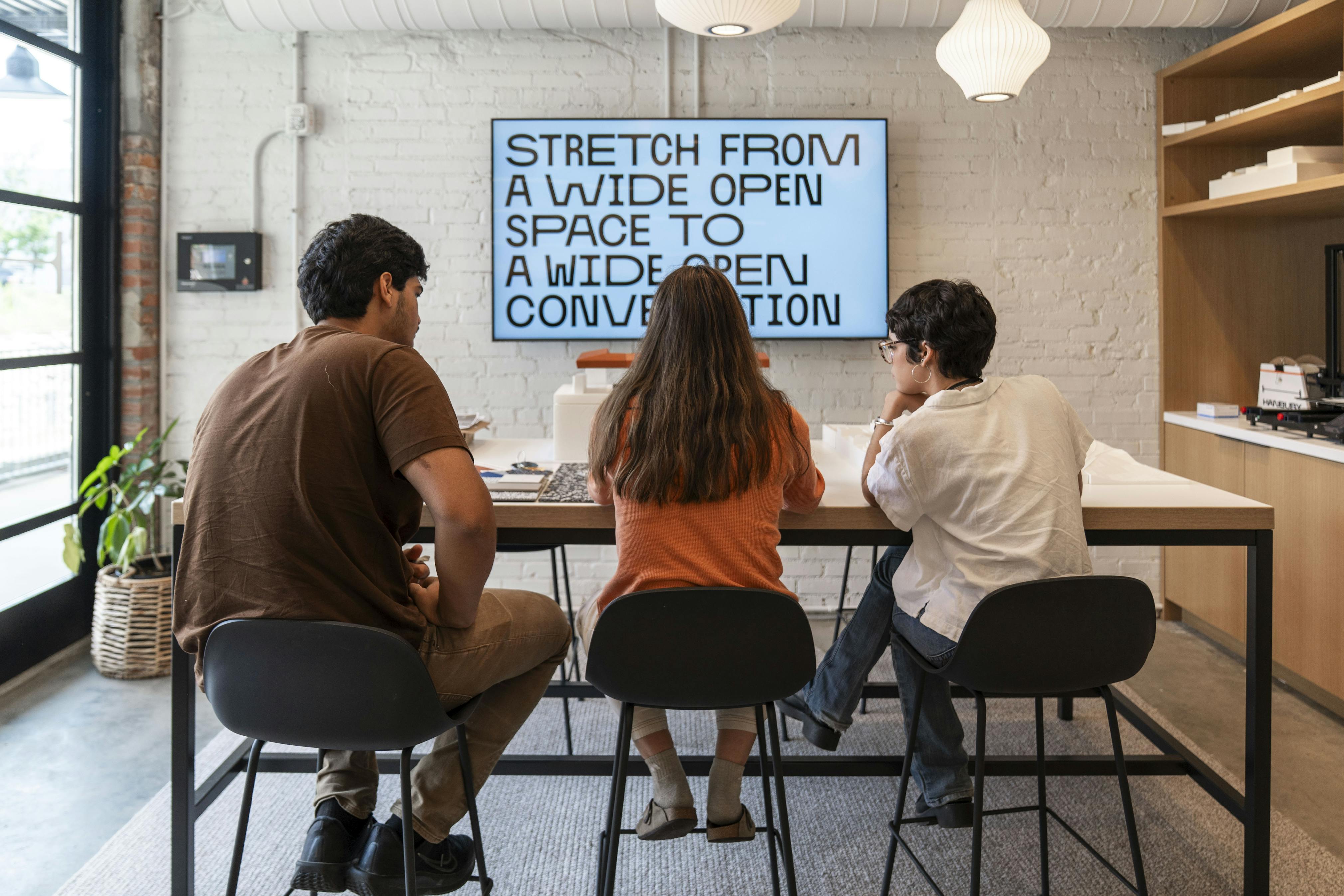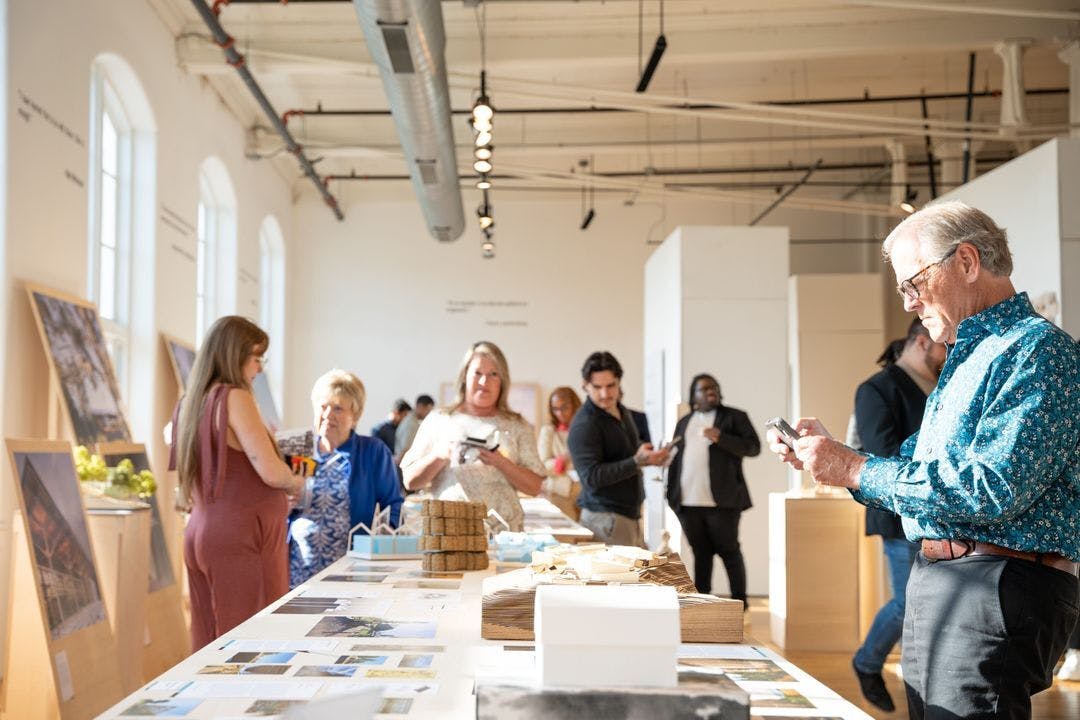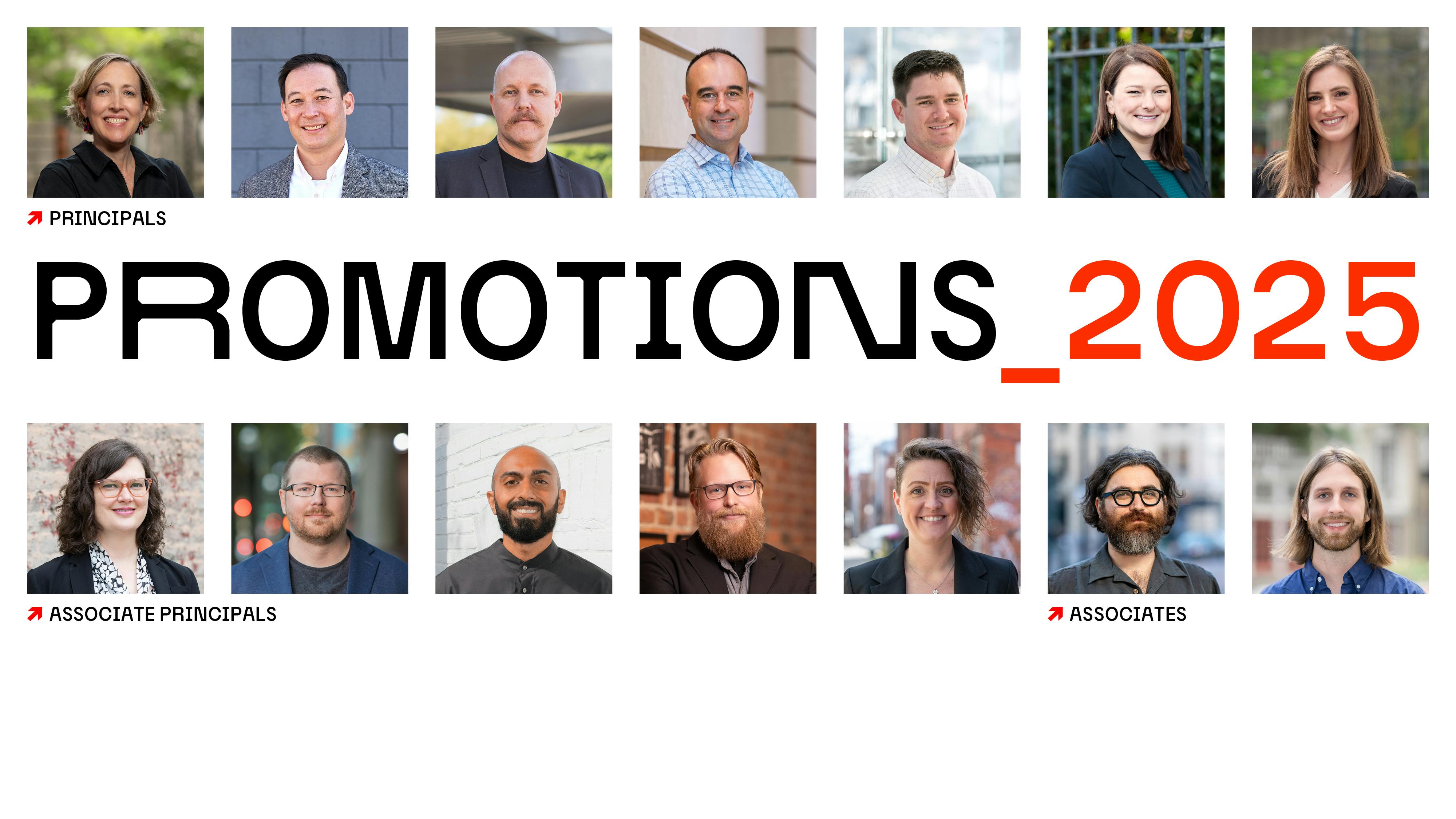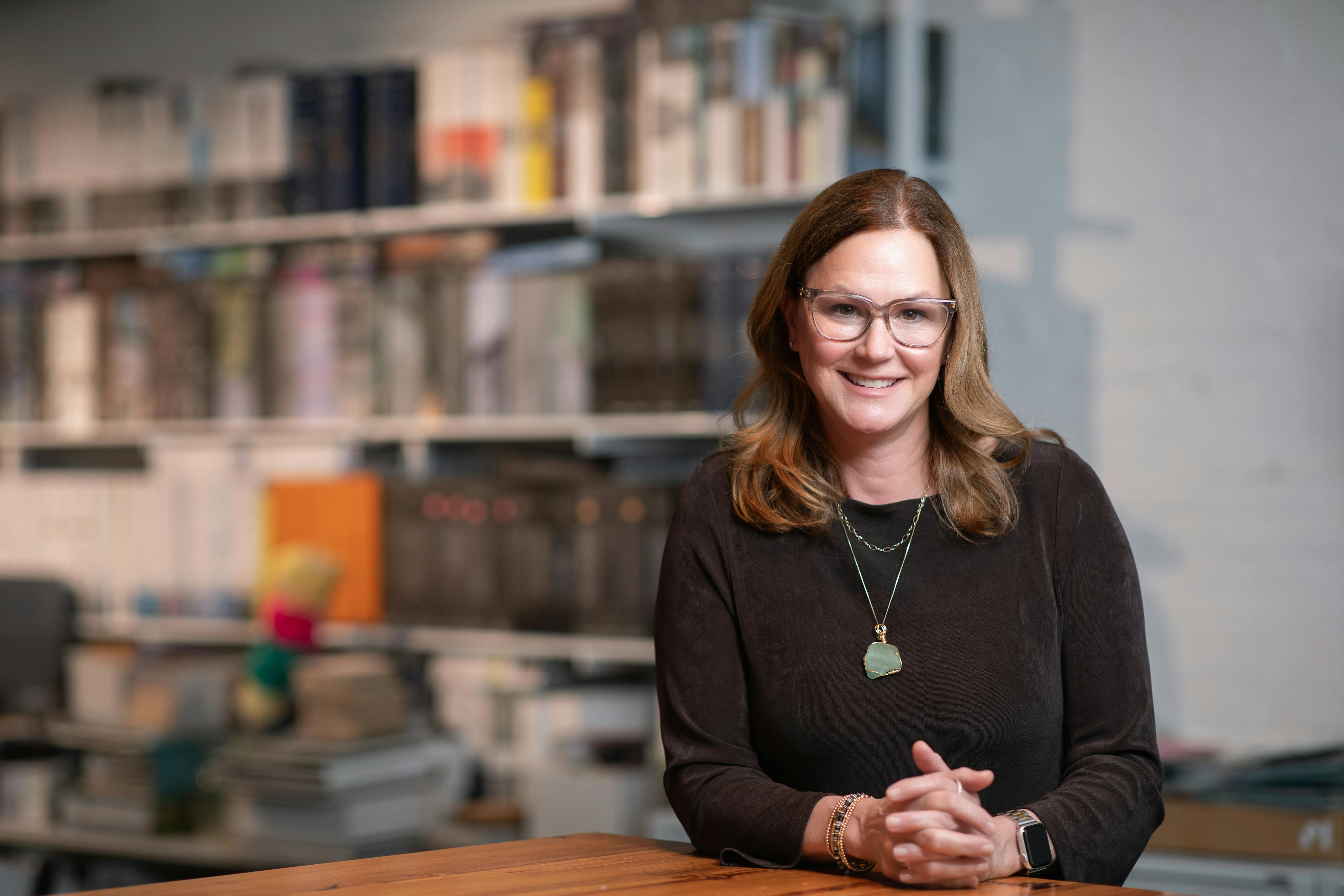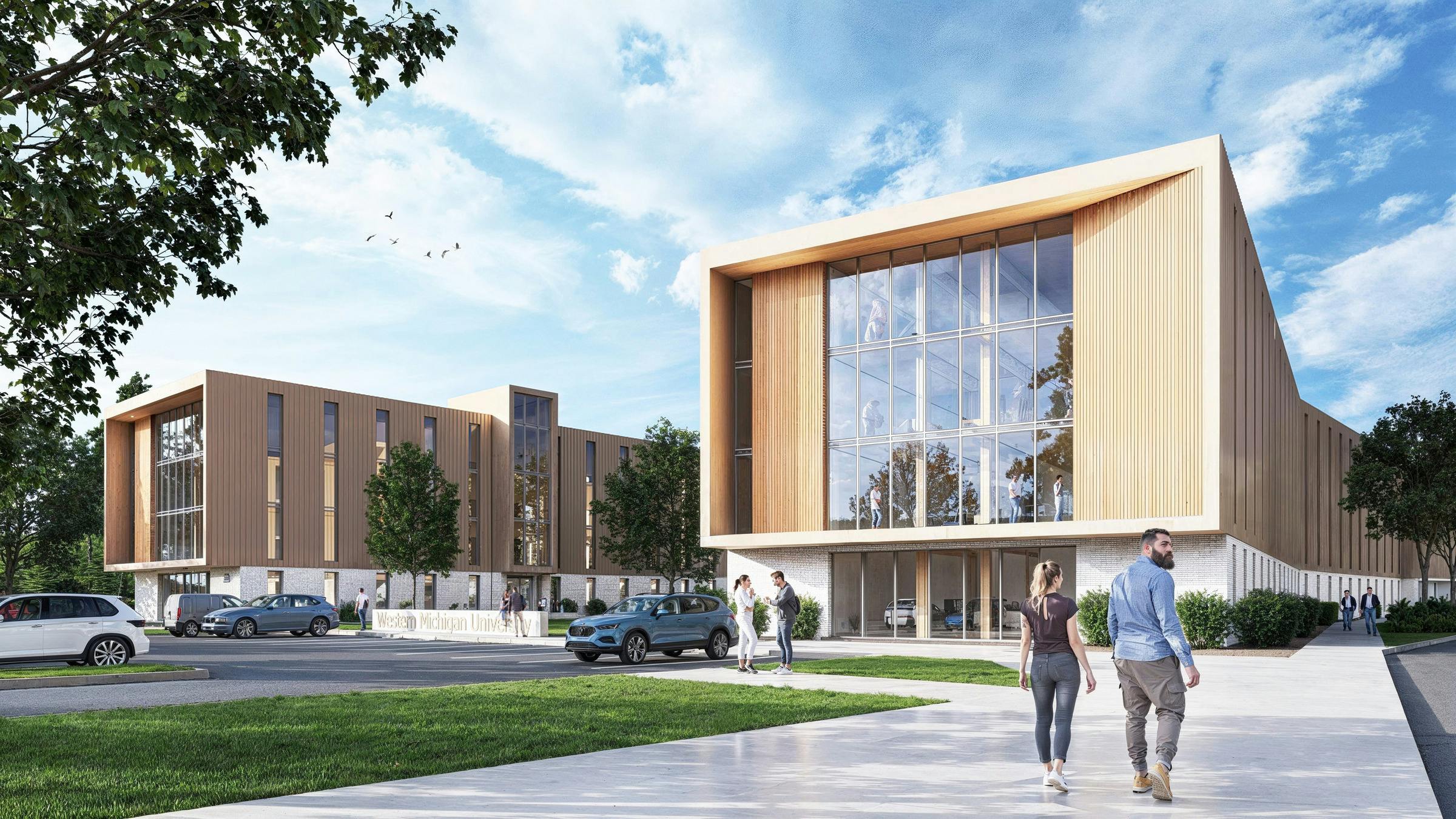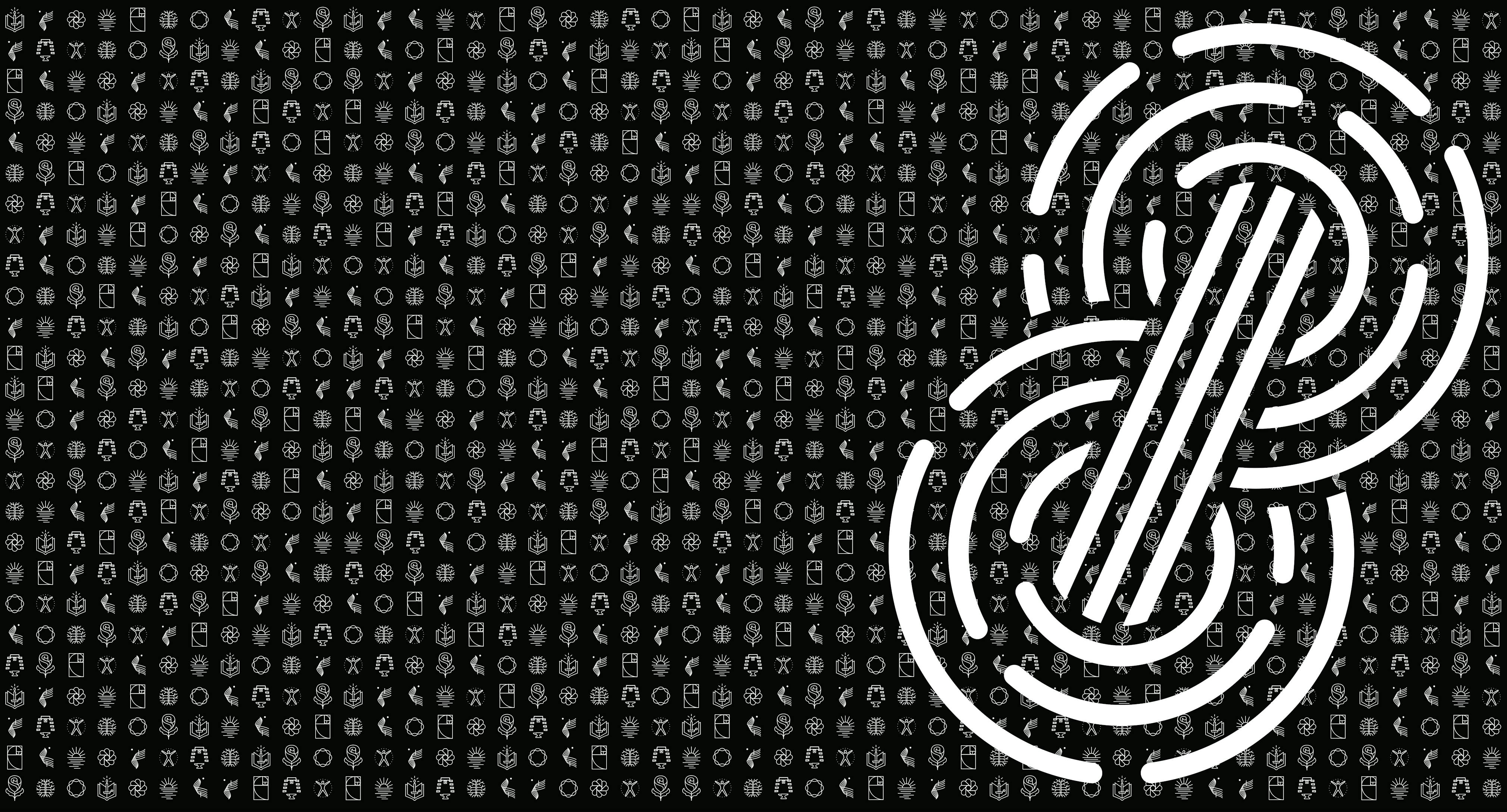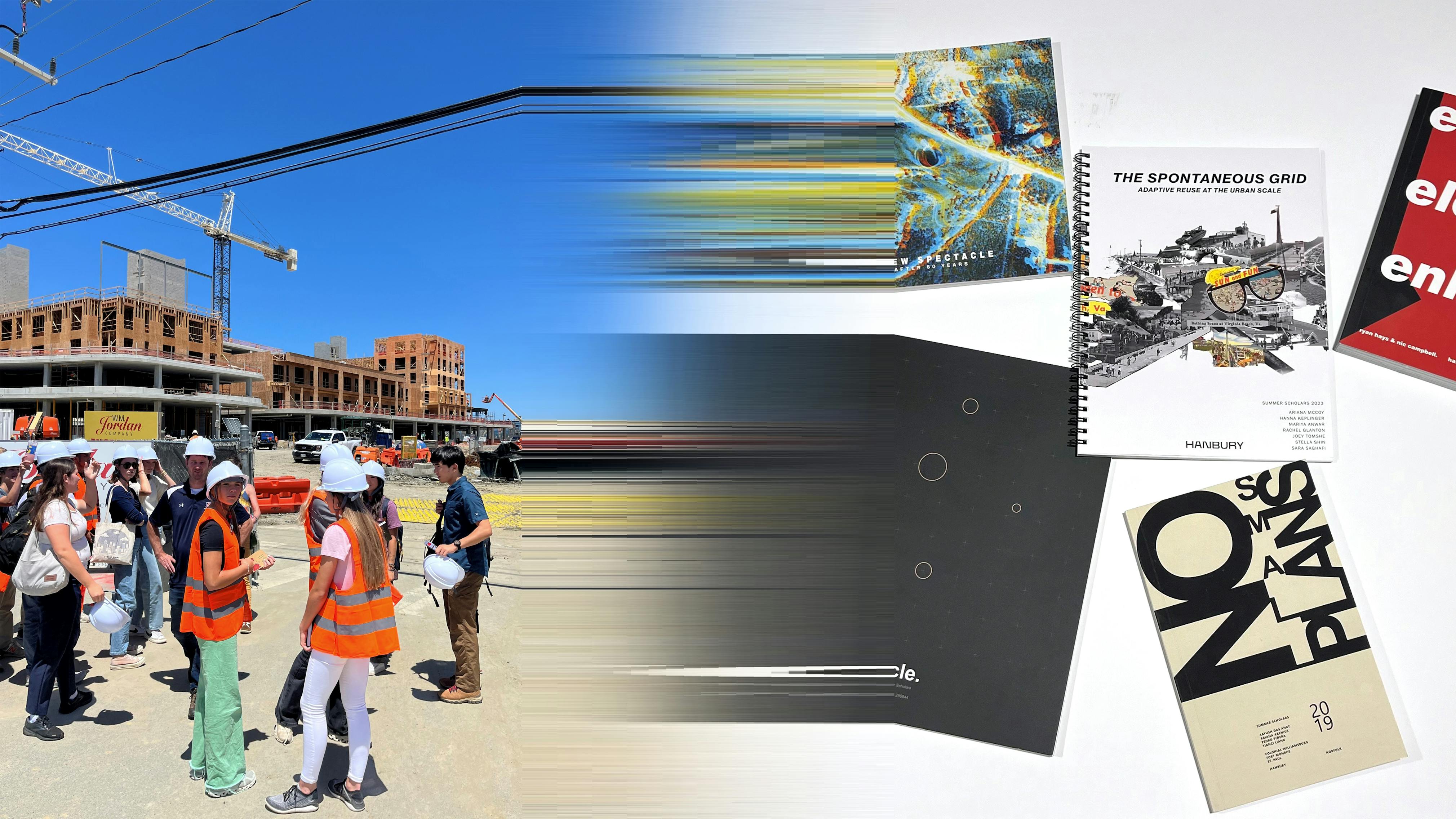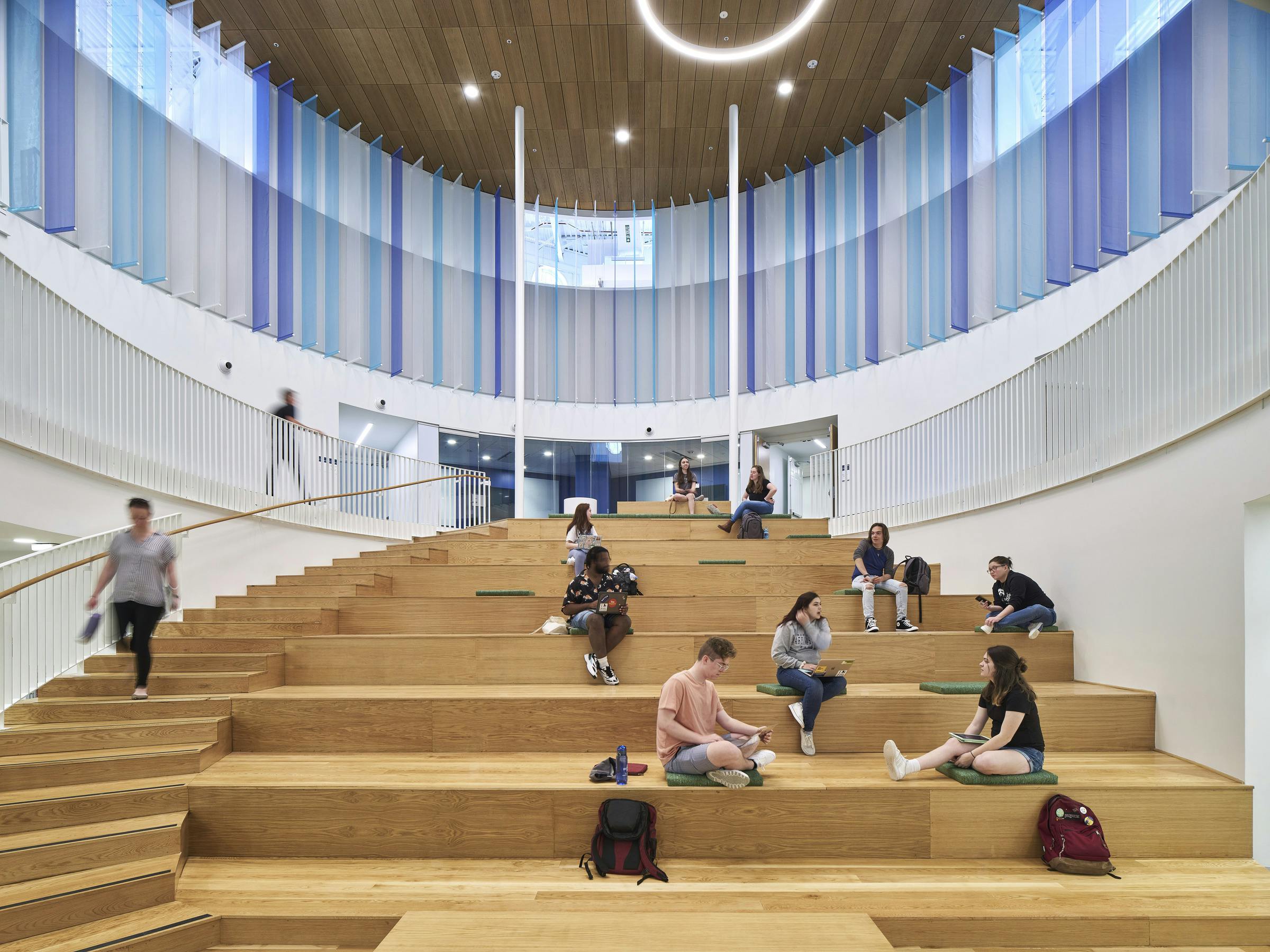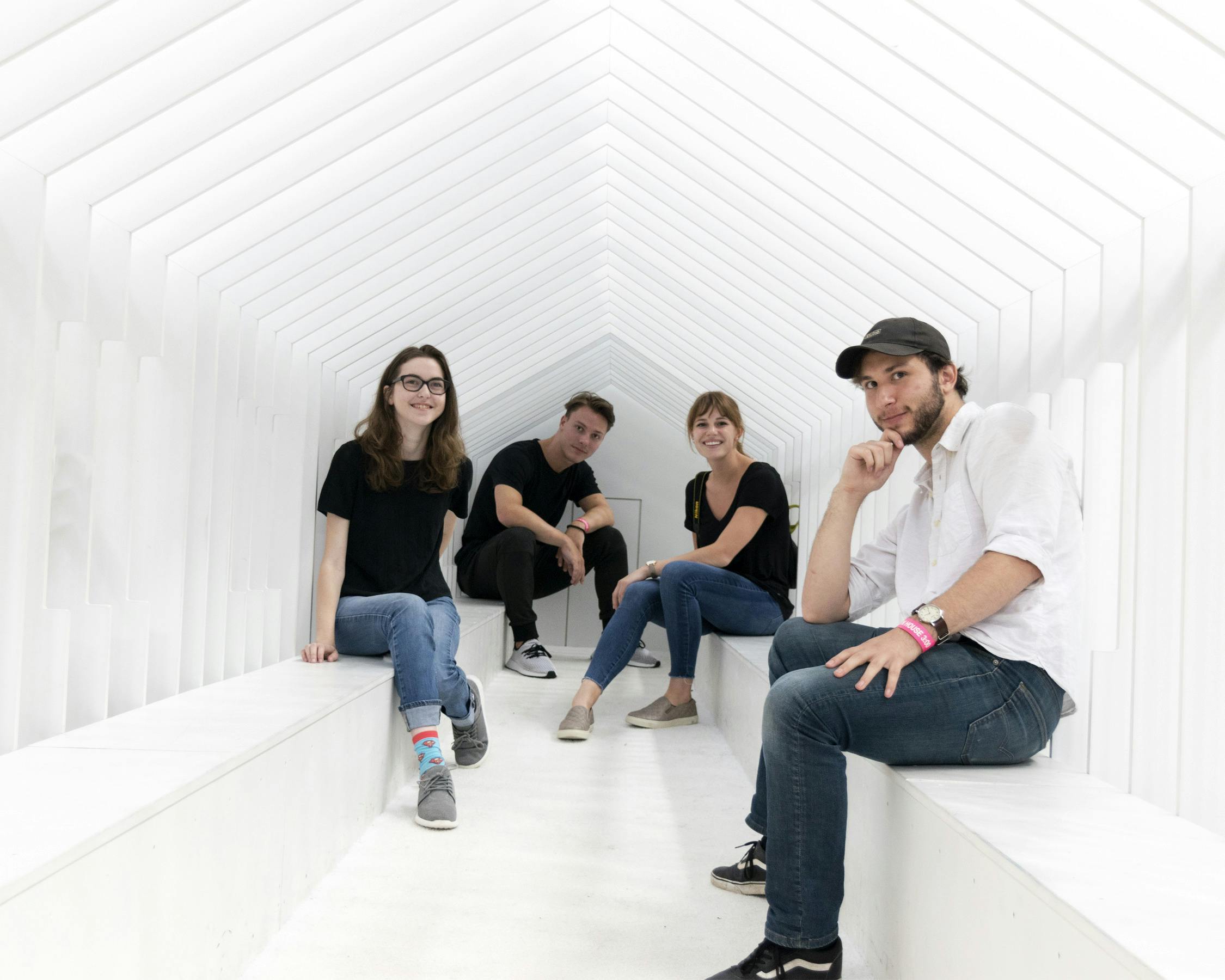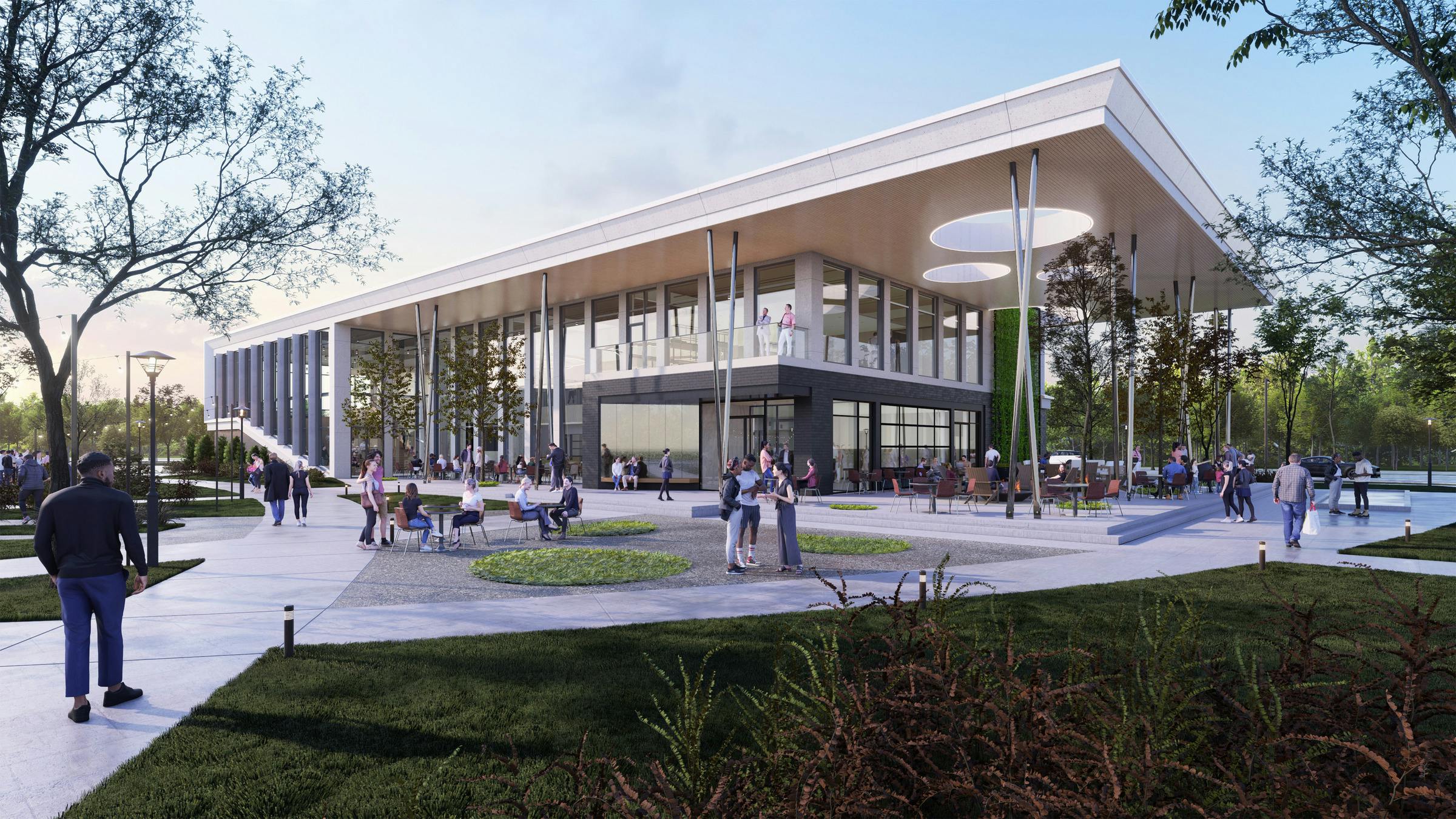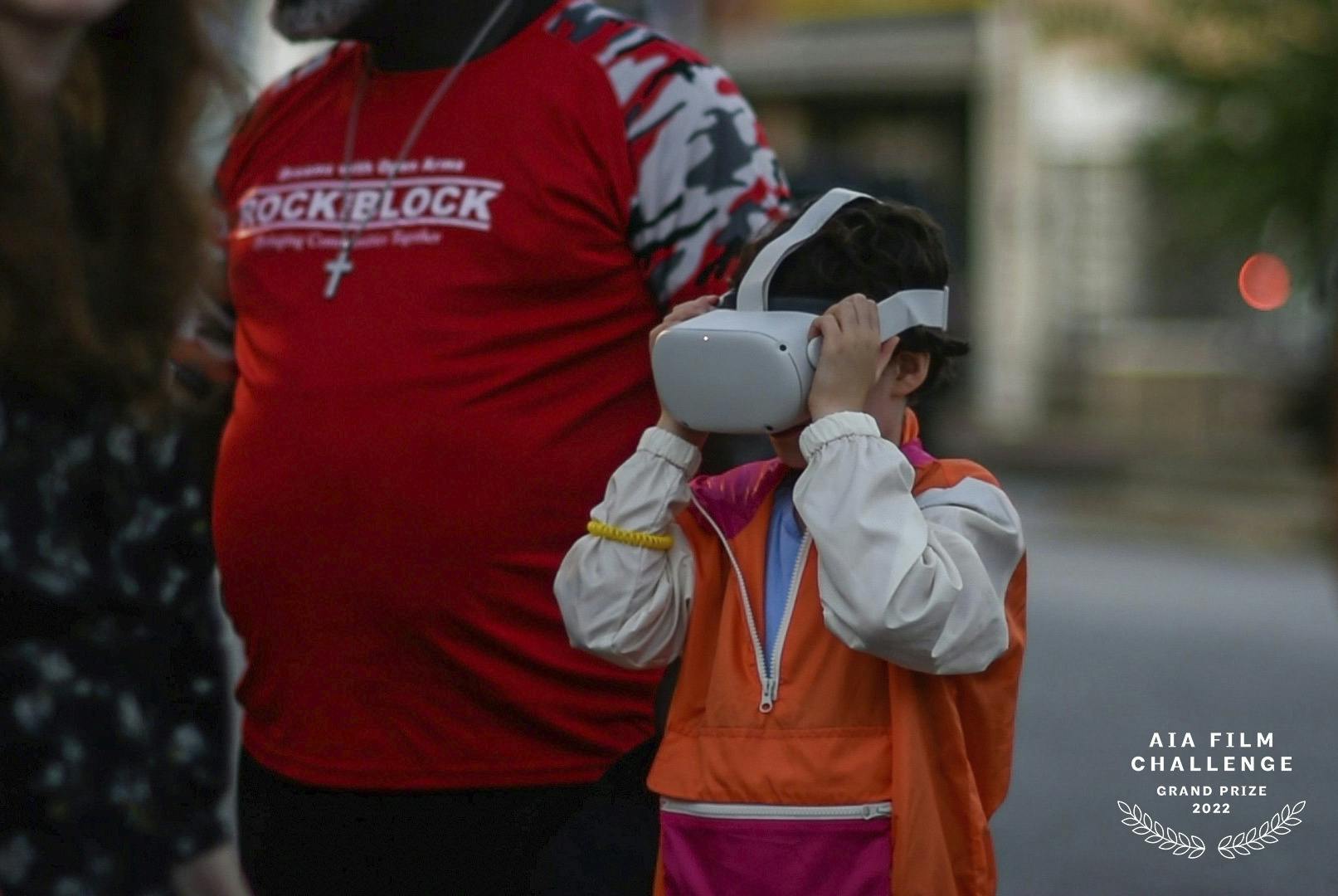



Inside Design
The 2024 VT Inside Design Summer Program, hosted by the Virginia Tech School of Architecture offered an immersive and multidisciplinary introduction to architecture, interior design, planning, and industrial design. For this year’s edition, Virginia Tech invited Hanbury to curate and lead the one-week program; catered to an international group of 150 high-school students with an interest in pursuing a design education.
With a focus on critical thinking, process, and craft, the program embraced a multi-hyphenate approach to design across a broad range of media and applications. Working through model, drawing, collage, and writing, students were encouraged to make acute observations of the world around them and to carefully consider how they could intervene at different scales. The program’s pedagogy promoted the generation of ideas rooted in a synthesis of these observations and each student’s unique personal experience, executed through foundational techniques of representation.
Each day of the program compounded as a crucial step in a progressive curriculum - each exercise building on its predecessor to develop a cohesive understanding of process and application throughout the week. Employing a diverse range of reference resources from Ray and Charles Eames to Richard Serra, the instructor team aimed to provide students with the intellectual scaffolding to utilize a process of iteration and constant refinement to actualize their ideas.
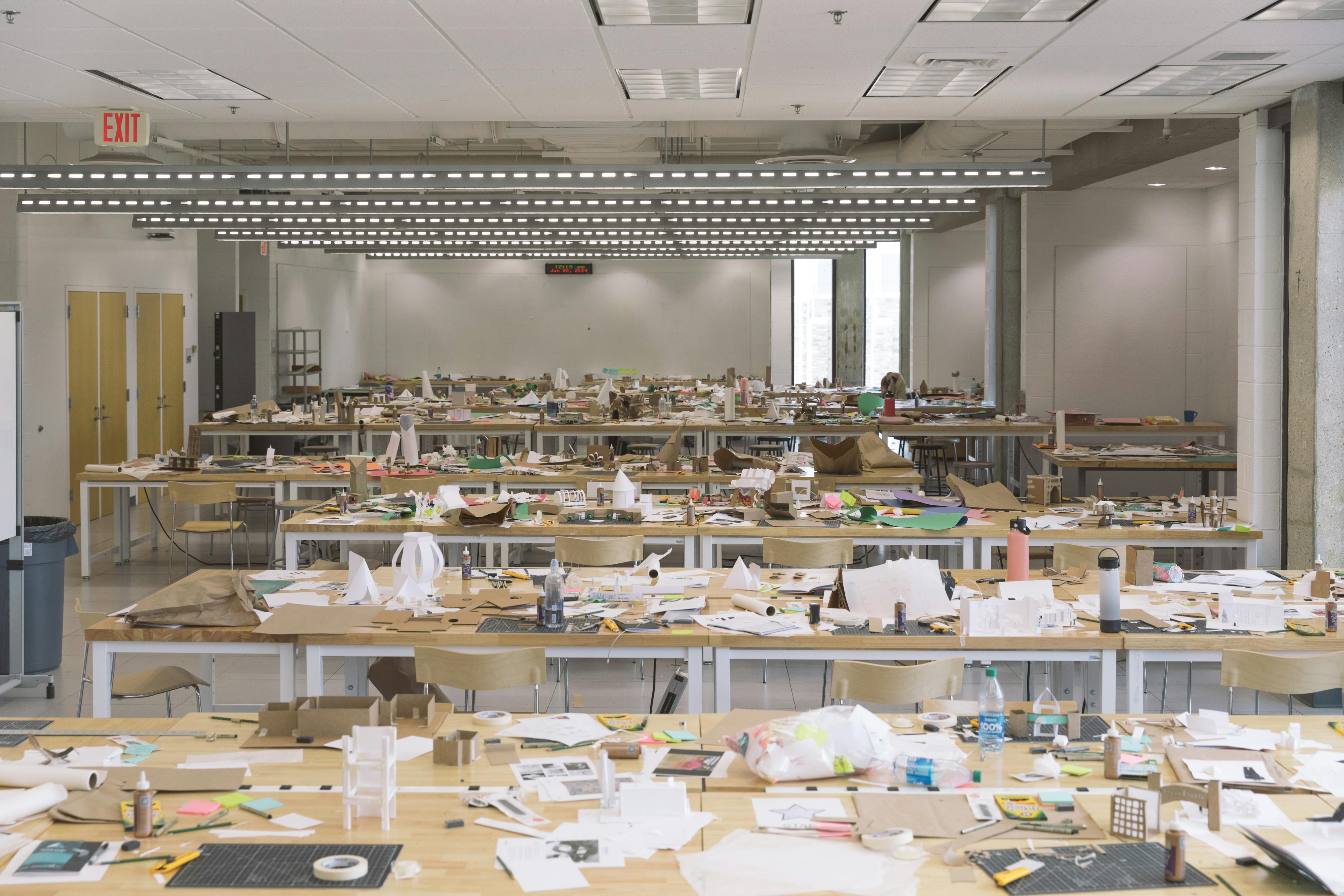

Beginning with an exercise developed by Juan de la Mora, students used operational verbs to manipulate post-it notes, à la Sol LeWitt’s wall drawings. From these iterations, students were asked to choose their favorite three post-it models and imagine each at three different scales: an object, a structure, and a landscape. This served as the foundation for the remaining few days; to consider interventions at different scales and strive for the scalar synergies between the human and the project.


The following days’ exercises stemmed from the post-it models, diving deeper into developing an architectural vocabulary to translate ideas into drawings. Students were introduced to the mechanics of drawing plans, sections, and elevations and tasked with deriving these drawings from one of their models. Through translating 3D to 2D, students were encouraged to further develop their ideas and leverage the medium of drawing to refine their design intentions. Punctuated by presentations and site visits to Hanbury’s projects at Virginia Tech, the program paired foundational lessons in representation with realized projects, aiming to tie the conceptual lessons of Inside Design with day-to-day applications in a design practice.


The program’s final exercise sought to materialize the week’s learnings into a single intervention. Given the prompt of “A space between two places”, students individually identified and documented a location on Virginia Tech’s campus and proposed their own intervention at the scale of either an object, a structure, or a landscape. Paying close attention to context and use, students specifically addressed the questions of “what does the project do?” and “who is the project for?”.


Virginia Tech’s Inside Design program culminated in a final exhibition, providing a platform for students to present their projects. This celebration of their hard work and creativity allowed them to share their achievements with peers, family, and the broader Inside Design community. The catalog of work in the exhibition served as a testament to the thoughtful insights, diligent craft, and meaningful collaboration of each student.
Hanbury thanks each of the students, parents, and Virginia Tech for an exciting edition of Inside Design.



Project Team: Abbie Welton, An Liu, Anna Carpenter, Cam Fullmer, Keith Storms, Leigh Hardy, Lindsay Duddy, Natsumi Oba
Video by: Mario Gandia









